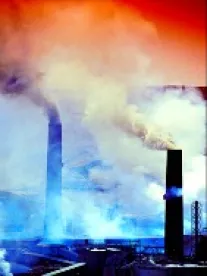EPA is shifting its air enforcement program to target air toxics, olefins production, refining, and mobile sources. For years, EPA has focused air enforcement on new source review (NSR) permitting violations at power plants, glass plants, and refineries. According to EPA, the new enforcement initiatives are designed to further the Climate Action Plan and will incorporate Next Generation Compliance (Next Gen) approaches, including advanced emissions detection technology. These initiatives will likely hit the oil and gas, petrochemical, and automotive industries the hardest.
EPA Announces Major Changes in Focus of Air Enforcement
This fall, EPA’s Office of Enforcement and Compliance Assurance unveiled its proposed National Enforcement Initiatives (NEI) for Fiscal Years 2017-2019. EPA reevaluates and selects NEI every three years to focus its resources on what the agency believes to be the most pressing environmental concerns. The proposed NEI mark a significant change in enforcement priorities. In the coming years, EPA will no longer focus on enforcing NSR permitting violations. The agency is not ruling out the future enforcement of NSR permitting violations, however. For example, EPA indicated that carbon black facilities may be ripe for NSR review.
EPA plans to turn its enforcement attention to air toxics, and thereby intends to reduce emissions of CO2, methane, and other high warming potential GHGs, from four areas of operation: flares, storage tanks, handling of hazardous waste, and mobile sources.
Flares.EPA believes flares often do not burn off air toxics as well as they should. The agency recently promulgated new source performance standards for flares. Now, EPA plans to target refineries and related petrochemical facilities to assess flare performance. According to EPA, this NEI will likely affect olefins production plants and petrochemical facilities the most.
Storage tanks. EPA intends to expand its NEI to include organic liquid storage tanks. The agency believes that volatile organic compound (VOC) and hazardous air pollutant emissions from storage tanks are a problem at many sites, including refineries, terminals, and chemical plants. EPA has observed that these emissions are largely caused by the inadequate maintenance of tanks and emission controls, as well as design flaws. EPA plans to use advanced monitoring technologies, such as optical gas imaging cameras and infrared cameras, to detect fugitive emissions. As part of Next Gen, EPA recently gave infrared cameras to 11 states.
Hazardous waste. EPA plans to target toxic air emissions caused by the handling of hazardous waste at large quantity generators and treatment, storage, and disposal facilities.
Mobile sources. EPA intends to heighten enforcement against excessive vehicle air emissions, especially in light of Volkswagen’s recent reporting scandal. EPA will also continue to enforce the renewable fuels standards to reduce alleged fraud committed by some petroleum refiners and importers. Finally, the agency will increase scrutiny of manufacturers and users of large marine engines due to new fuel sulfur limits and nitrogen oxides emissions limits.
EPA will announce its final selection of NEI in the National Program Manager Guidance (NPM Guidance) shortly. The NPM Guidance is likely to include the above NEI.
Takeaways
The new focus on air toxics and GHGs will subject different industries to EPA’s enforcement. EPA will use numerous investigative techniques, such as Section 114 information requests and the new Next Gen information gathering technologies, to determine what sources warrant enforcement. The oil and gas, petrochemical, and automotive industries are specifically targeted. Since EPA is incorporating Next Gen strategies into its everyday policy, companies must face head on the use of advanced emissions detection technology and new approaches to enforcement.
The regulated community should prepare for this new reality in air enforcement now.



 />i
/>i
